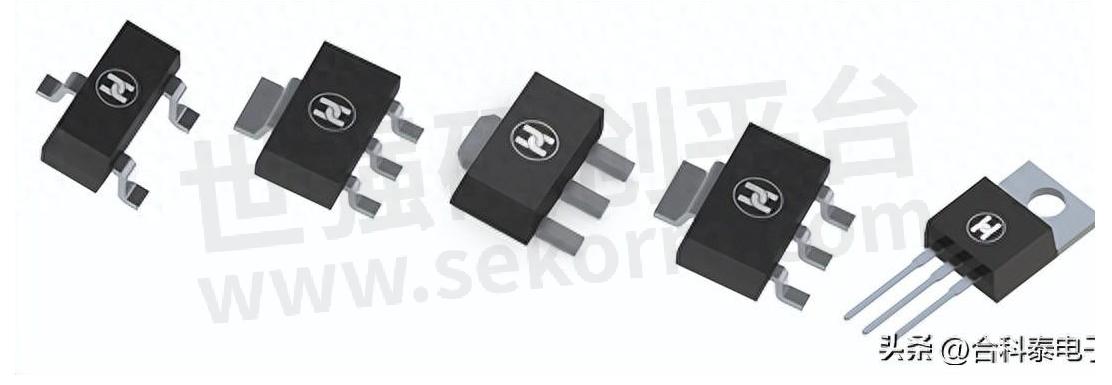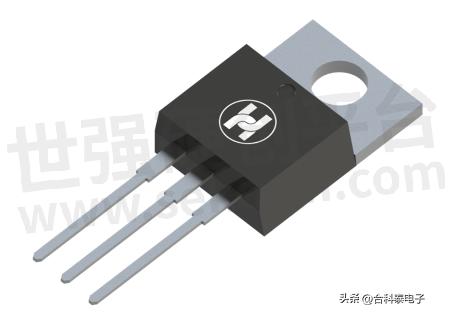What Are The Common Types of Triodes?

What kinds of triodes are there, and what are their characteristics?
Triode is a typical current amplification product, it is a small current control large current device, its main function is to amplify small signals into larger signals for output, and the more common application scenario is amplification circuit. So, what kinds of triodes are there, and what are their characteristics? In this issue, Hottche takes you to know.

There are four common triodes, namely:
NPN transistor is composed of three different types of semiconductor materials, namely N-type semiconductor, P-type semiconductor, and N-type semiconductor. Among them, the P-type semiconductor is located in the middle, and two N-type semiconductors are located on both sides. NPN transistor is a bipolar transistor, which is used in various electronic circuits, such as amplifiers, switches, and oscillators.

The working principle of the NPN transistor is mainly based on its structural characteristics and voltage bias conditions. In an NPN transistor, a direct voltage needs to be applied between the collector and the base, and a reverse voltage needs to be applied between the emitter and the base. This voltage bias condition will cause the base n region to receive a forward electric field and the emitter n region to receive a reverse electric field. When the input voltage is applied to the base, the N region of the emitter becomes narrower, and the number of electrons injected from the base into the emitter increases, which increases the electron concentration in the emitter region and forms the emission current. At the same time, due to the voltage bias applied between the collector and the emitter, the N region of the collector is narrowed, which makes the number of electrons collected by the collector in the emission current increase, forming a collector current. By controlling the base current, the current can be controlled and the function of current amplification can be realized.

NPN transistors can be in three working regions: cutoff region, amplification region, and saturation region. In an audio amplifier, an NPN bipolar transistor can be used as an amplifier to amplify weak audio signals into a larger current and drive the speaker to make sound. In switching the power supply, an NPN bipolar transistor can be used as a switch to control the on-off of the power supply. In oscillators, NPN bipolar transistors can generate oscillation signals, which are used in various electronic devices.
PNP transistor is another type of transistor, its structure is different from that of PNP, but its working principle is similar to that of NPN transistor, except that most carriers moving in the base region and amplifying signals are holes instead of electrons. The emitter junction of PNP transistor should be forward biased, and the voltage in the base region is higher than that in the emitter region, while most carrier holes pass through the collector, and the voltage in the collector region is lower than that in the base region.
The polarities of NPN and PNP triodes are different. For NPN triodes, forward bias is required, that is, the base voltage is higher than the emitter voltage to conduct; For a PNP triode, it needs reverse bias, that is, the voltage at the base is lower than the voltage at the emitter to turn on. This also means that the NPN transistor is more suitable for circuits with a positive power supply, while the PNP transistor is more suitable for circuits with negative power supply.
Whether it is an NPN transistor or a PNP transistor, their application values are different. From the application point of view, most sensor output circuits, whether NPN or PNP, are open collector output signals (except AC), and they all have the most basic three signal lines, which are (VCC, GND, OUT), there is also 4-wire OUT(NO+NC). Although both NPN and PNP are bipolar transistors, their functions and applications in circuits are different due to their different structures and working principles.
PNP transistor usually has the characteristics of small volume, less output, low impedance, and less noise than NPN transistors. PNP transistors can be used as switches, such as analog switches, panic buttons, etc. It can be used in a current source circuit, that is, it can be used in the amplifier circuit and Darlington pair circuit by using the characteristics of current flowing from the collector. PNP transistor is used in heavy-duty motors to control current and various robot and microcontroller design applications.
This tube is composed of two or more triodes connected, and its working principle is mainly based on the amplification function of triodes. Specifically, the collector of the front triode is connected with the collector of the back triode, and the emitter of the front triode is connected with the base of the back triode. The power of the front triode is generally smaller than that of the back triode. The base of the front triode is used as the base of the Darlington tube, and the emitter of the back triode is used as the emitter of the Darlington tube.
The main parameters of the Darlington tube include gain, frequency response, input impedance, output impedance, noise figure, and saturation current. These parameters determine the performance and application range of the Darlington tube. The main feature of the Darlington tube is that its magnification is very high because its magnification is the product of the magnification of the triode that makes it up. Therefore, Darlington tubes are usually used in amplification circuits that need high sensitivity to amplify very small signals, such as high-power switching circuits, sound amplifiers, and motor drivers.
Darlington tubes can be used in high-power switching circuits, motor speed regulation, inverter circuits, and so on. Take driving a small relay as an example, it uses CMOS circuit to drive the circuit of high sensitivity relay through the Darlington tubes. Darlington tubes can be used as an audio amplifiers or other signal amplifiers, which are more suitable than a single triode because of their higher signal amplification and less noise. Because of its fast switching characteristics, the Darlington tubes can be used to control current, adjust voltage, turn on lights, and other applications. Darlington tube can be used as an LED driver, motor driver, and so on, which effectively improves the output power.
4. Digital transistor
This is a transistor with resistors, which is not much different from ordinary transistors. It does not use any digital technology but only has one or two built-in bias resistors, that is, the so-called bias transistor. Compared with ordinary transistors, the input-output relationship of Digital transistors is linear, and the working condition is stable.
Digital transistors usually have the characteristics of fast switching, which makes them suitable for the amplification and adjustment of digital signals. It integrates the functions of a current amplifier and switch, can be used as a digital logic gate and analog signal amplifier, has high integration, and is easy to be embedded in digital circuits. Low power consumption, almost no power consumption in the off state, and relatively low power consumption in the saturated state. It has good thermal stability in saturated and cut-off States, and will not cause performance fluctuation due to temperature change.
Digital transistors not only play an important role in amplification and switching control but also are the core components of digital circuits and memories. Its function includes amplification. By injecting current IB into the base, the digital transistor can obtain a current that is amplified by hFE times in the collector IC. In circuit application, the output current of hFE times can be obtained by continuously controlling the collector current through the input signal. Switching function, in the ON state, the digital transistor is electrically saturated, reducing the saturation voltage between collector and emitter, thus realizing the switching function. As a switch controller, digital transistors are often used in DC battery managers, intelligent energy controllers, solenoid valves, etc., and achieve specific goals through automatic control. Because of its strong adaptability, wide frequency range, and stable performance, digital transistors are widely used in both digital and analog circuits.
No matter what type of transistor it is, its function and scene are closely related to its product characteristics. Take all triodes as an example. The packaging forms of triodes include metal packaging and plastic packaging, including SOT-23, SOT-143, SOT-223, SOT-89, SOT-323, SOT-25, TO-92, TO-126 and TO-220. There are various packages of triodes. Choosing the appropriate package form depends on the power and frequency characteristics of triodes and other application scenarios. It is most important to choose the most suitable package according to your own circuit and application.
- +1 Like
- Add to Favorites
Recommend
- Shenzhen Luguang Electronics Announced a Distribution with Sekorm, Bringing Domestic Diodes, Triodes, Rectifier Bridges and Other Products
- What Is The Difference between s8050 Triode and ss8050 Triode?
- Triode Replacement Principle
- Hottech Adopts SOT-23 Packaged Triode S9012 being Seen in Many Common Consumer Products
- Structure and Classification of Triode
- HKT PNP Triode MMST3906 Can be Used for Audio Amplification and Radio Switch
- PNP Triode is Widely Used in Audio Amplifier and Power Controller
- The S9015 Triode Produced by Hottech Can be Used in Audio Amplifier Circuits and LED Applications
This document is provided by Sekorm Platform for VIP exclusive service. The copyright is owned by Sekorm. Without authorization, any medias, websites or individual are not allowed to reprint. When authorizing the reprint, the link of www.sekorm.com must be indicated.






























































































































































































































































































































































































































































































































































































































































































































































































































































































